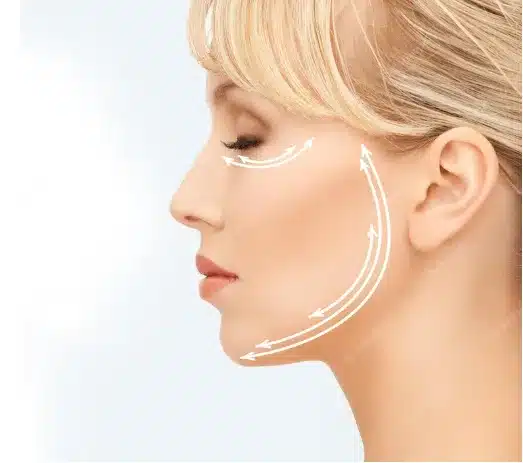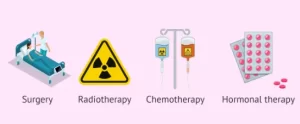Facial contouring surgery, also known as facial sculpting or facial reshaping, is a cosmetic procedure aimed at enhancing the facial structure and achieving a more balanced, harmonious appearance. This surgical technique involves altering certain facial features’ shape, size, or position to create a more aesthetically pleasing look.
Facial contouring surgery can address various concerns, such as a weak chin, disproportionate facial proportions, or signs of aging. By improving the overall balance and symmetry of the face, this procedure can boost self-confidence and improve the patient’s quality of life.
different kinds of Facial shape
Before we start, you should know about different kinds of face shapes. There are several different types of face shapes, each with unique characteristics. Here are some common face shapes:
- Oval
- Round
- Square
- Heart
- Diamond
- Oblong/Rectangular
- Triangle/Pear
Different Types of Facial Contouring Surgery
Facial contouring surgery encompasses a range of procedures, each targeting specific areas of the face. Some of the most common types of facial sculpting include:
- Rhinoplasty: Reshaping the nose to improve its size, shape, or proportion.
- Chin Augmentation: Enhancing the projection or size of the chin to achieve better facial balance.
- Cheek Augmentation: Adding volume to the cheeks to enhance their definition and create a more youthful appearance.
- Jawline Contouring: Modifying the jawline to achieve a more defined and chiseled look.
- Buccal Fat Removal: Reducing the size of the buccal fat pads to achieve a slimmer facial profile.
- Neck Lift: Tightening the skin and muscles of the neck to eliminate sagging and improve contour.
- Brow Lift: Elevating the position of the eyebrows to create a more youthful and refreshed appearance.
These are just a few examples of facial contouring surgeries, and the specific procedures chosen will depend on the patient’s unique needs and goals.
How Facial Contouring Surgery Gets Done Step by Step
- Consultation: The process begins with a consultation with a board-certified plastic surgeon. During this initial appointment, you will discuss your goals, concerns, and expectations for the surgery. The surgeon will evaluate your facial structure, discuss suitable options, and explain the surgical approach.
- Pre-operative Preparations: Before the surgery, you may be required to undergo specific pre-operative preparations, such as obtaining medical clearance, undergoing laboratory tests, or adjusting medications. You will receive specific instructions regarding fasting, medication usage, and any necessary lifestyle changes.
- Anesthesia: On the day of the surgery, you will be administered anesthesia to ensure your comfort during the procedure. The type of anesthesia used will depend on the specific surgical technique and your surgeon’s recommendation. It can range from local anesthesia with sedation to general anesthesia.
- Incision Placement: The surgeon will make precise incisions in strategic locations based on the specific procedure. Incisions are typically placed in inconspicuous areas to minimize visible scarring.
- Tissue Manipulation: The surgeon will carefully manipulate the underlying tissues, such as muscles, fat, and connective tissue, to achieve the desired contouring effect. This may involve removing excess fat or tissue, repositioning or reshaping structures, or adding volume through fat grafting or implants.
- Suturing and Closure: The surgeon will meticulously close the incisions using sutures or other appropriate closure techniques once the desired changes are made. They will ensure proper alignment and minimize tension on the incisions to promote optimal healing and minimize scarring.
- Post-operative Care: After the surgery, you will be moved to a recovery area, where you will be monitored by medical staff until you are ready to be discharged. Your surgeon will provide detailed post-operative care instructions, including wound care, activity restrictions, medication usage, and follow-up appointments.
- Recovery and Results: The recovery period will vary depending on the extent of the surgery and individual healing factors. Swelling, bruising, and discomfort are common initially but will gradually subside over time. Following your surgeon’s instructions for a smooth recovery and achieving the best possible results is important.

Benefits of Facial Contouring Surgery
- Enhanced Facial Harmony: Facial contouring surgery helps create better balance and harmony among the facial features, resulting in a more attractive overall appearance.
- Increased Confidence: By addressing cosmetic concerns and improving facial aesthetics, patients often experience a boost in self-confidence and self-esteem.
- Youthful Appearance: Certain procedures, such as temple lifts and brow lifts, can effectively rejuvenate the face, reducing signs of aging and creating a more youthful look.
Risks of Facial Contouring Surgery
Facial contouring surgery carries certain risks and potential complications, like any surgical procedure. Patients need to be aware of these risks before undergoing the procedure. Some facial contouring risks include:
- Infection: There is a risk of infection at the incision sites, which can be managed with appropriate antibiotic treatment.
- Bleeding: Excessive bleeding during or after surgery is possible but can be controlled through proper surgical techniques and post-operative care.
What Age Can Get Facial Contouring Surgery
There is no upper age limit for facial contouring surgery as long as the patient is in good overall health and has no contraindications. It is essential for individuals considering facial sculpting to have realistic expectations and undergo a thorough consultation with a qualified plastic surgeon to determine the most suitable approach for their unique circumstances.

What Should You Do Before Facial Contouring Surgery
Before undergoing facial contouring surgery, there are several important steps to take to ensure a successful procedure and recovery:
- Consultation
- Medical Evaluation
- Quit Smoking
- Medication Review
- Follow Pre-operative Instructions
- Arrange for Support
To-Do and Not-to-Do Things After Facial Contouring Surgery
After facial sculpting, following your surgeon’s post-operative instructions is crucial to ensure a smooth recovery and optimize the results. Some general guidelines include:
To-Do:
- Take prescribed medications as directed, including pain medication and antibiotics.
- Keep the incision sites clean and follow proper wound care instructions.
The face contouring procedure is suitable for people who feel that their facial shape and structure are not good-looking. However, according to medical providers, not every person is eligible to undergo the procedure.Icloudhospital
Not-to-Do:
- Avoid smoking and exposure to secondhand smoke, as it can hinder healing and increase the risk of complications.
- Do not engage in activities that may increase the risk of trauma or injury to the face.
It is important to note that these recommendations are general guidelines, and your surgeon will provide specific instructions tailored to your individual case.
How Much Does Facial Contouring Surgery Cost
The cost of facial contouring surgery can vary significantly depending on several factors, including the type of procedure performed, the surgeon’s expertise, the geographic location, and the specific surgical facility.

summary
Facial contouring surgery allows individuals to enhance their facial features, address cosmetic concerns, and achieve a more balanced and aesthetically pleasing appearance. Patients can benefit from improved facial harmony, increased confidence, and rejuvenation with various types of procedures tailored to specific needs.
Fun fact: While many instantly think of rhinoplasty, buccal fat removal, and jawline surgery as the go-to methods for a chiseled visage, the world of facial enhancement isn’t just about going under the knife.
Fun alternatives like Botox, designed to smooth out those pesky wrinkles, and dermal fillers, perfect for restoring youthful volume, play their part too!
And suppose you’re looking for an all-in-one rejuvenation. In that case, the classic facelift might be your golden ticket to combining the benefits of both surgical and non-surgical facial contouring treatments.
FAQs
- Is facial contouring surgery painful? Facial sculpting involves anesthesia to minimize pain during the procedure. Pain medication is provided for any discomfort during the recovery period.
- How long is the recovery time for facial contouring surgery? Recovery time varies depending on the procedure and individual healing. It can take weeks to months for swelling to subside and final results to appear.



